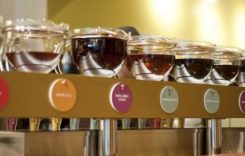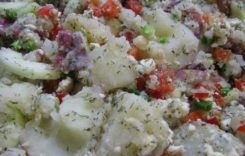
The changing climate is affecting not only our weather and environment, it has an increasing impact on growing food as well. Crops have to be more resilient to drought and temperature changes and must be able to withstand a plethora of diseases.
Giving plants the tools to protect themselves could be the answer. Many studies have proven for example, that genetically modified crops can be more efficient to grow, offering significant environmental benefits when it comes to food production.
The same solution could also help fight diseases that are threatening popular, but disease-vulnerable, fruit and vegetable crops.
“We have the technology today to be able to breed plant varieties that are resistant to devastating diseases,” explains Stephen Yarrow, vice-president of plant biotechnology with CropLife Canada. “Not only will that keep staple crops viable and ensure a sustainable food supply, there are the added environmental benefits in terms of enabling conservation tillage and reducing greenhouse gas emissions.”
Let’s look at oranges. Canadians love Florida citrus – it brings a welcome blast of sunny southern warmth into our long, cold winters. However, citrus greening disease, a bacterial disease spread from tree to tree by a small insect, could wipe out every Florida orange grove within 10 years. Farmers have been replacing trees frequently and they are also using pesticides to fight this insect and strengthen tree health. Those solutions, however, are proving unsustainable.
Researchers at Texas A&M University have developed orange trees that are resistant to citrus greening. This was done by introducing a spinach protein that keeps certain bacteria and fungi in check. Although it is still being field tested, use of the trees could prove to be a long-term solution to the citrus greening disease.
Papaya is another example. Hawaii is a major producer of papaya, but its production was almost cut in half in the 1990s by an outbreak of a disease called papaya ringspot virus. Researchers from Cornell University were able to save the crop by making it resistant to the strain of the virus prevalent in Hawaii.
They did this by using a piece of the virus’ sequence and inserting it, in reverse orientation, into the papaya’s genome, stopping proliferation of the virus in the fruit. The resistant papaya was approved in the United States in 1997 and today, almost 80 per cent of Hawaii’s papaya crop consists of this variety.
“As our climate changes, so will disease challenges and weather-related pressures on plants, including popular crops like oranges and papaya,” adds Yarrow. “With the help of science, we can protect those crops and ensure a consistent supply of healthy, safe food.”









